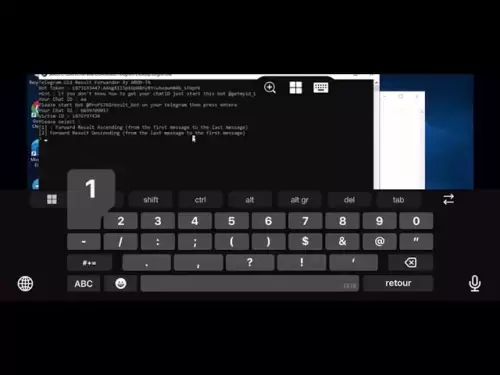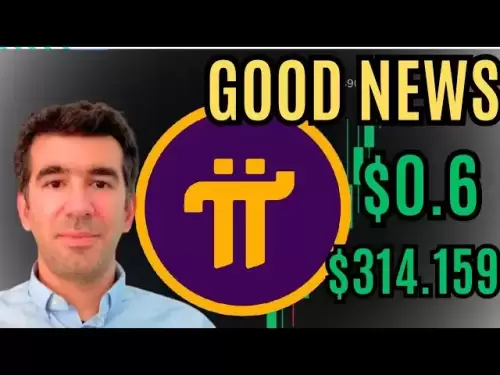-
 Bitcoin
Bitcoin $107,031.8162
-2.52% -
 Ethereum
Ethereum $2,621.4228
-2.51% -
 Tether USDt
Tether USDt $1.0001
-0.04% -
 XRP
XRP $2.2397
-4.12% -
 BNB
BNB $685.2354
-0.57% -
 Solana
Solana $169.7513
-4.44% -
 USDC
USDC $0.9998
0.01% -
 Dogecoin
Dogecoin $0.2178
-4.24% -
 TRON
TRON $0.2742
-0.79% -
 Cardano
Cardano $0.7353
-3.78% -
 Sui
Sui $3.5357
-4.72% -
 Hyperliquid
Hyperliquid $32.8671
-11.41% -
 Chainlink
Chainlink $15.3525
-3.68% -
 Avalanche
Avalanche $22.8728
-2.22% -
 Stellar
Stellar $0.2798
-3.35% -
 Toncoin
Toncoin $3.4068
13.49% -
 UNUS SED LEO
UNUS SED LEO $9.1041
2.33% -
 Shiba Inu
Shiba Inu $0.0...01398
-3.54% -
 Bitcoin Cash
Bitcoin Cash $405.5943
-3.07% -
 Hedera
Hedera $0.1818
-4.36% -
 Litecoin
Litecoin $93.6910
-3.21% -
 Polkadot
Polkadot $4.4305
-2.75% -
 Monero
Monero $349.3281
-8.45% -
 Bitget Token
Bitget Token $5.1994
-3.07% -
 Pepe
Pepe $0.0...01346
-3.80% -
 Dai
Dai $0.9998
0.01% -
 Pi
Pi $0.7211
-3.95% -
 Ethena USDe
Ethena USDe $1.0007
0.00% -
 Uniswap
Uniswap $6.6488
1.82% -
 Aave
Aave $261.6923
-5.14%
What is the MA potential bottom pattern? What are the characteristics before the outbreak?
The MA potential bottom pattern uses converging moving averages and stabilizing price action to signal potential trend reversals in cryptocurrencies.
May 27, 2025 at 11:01 am
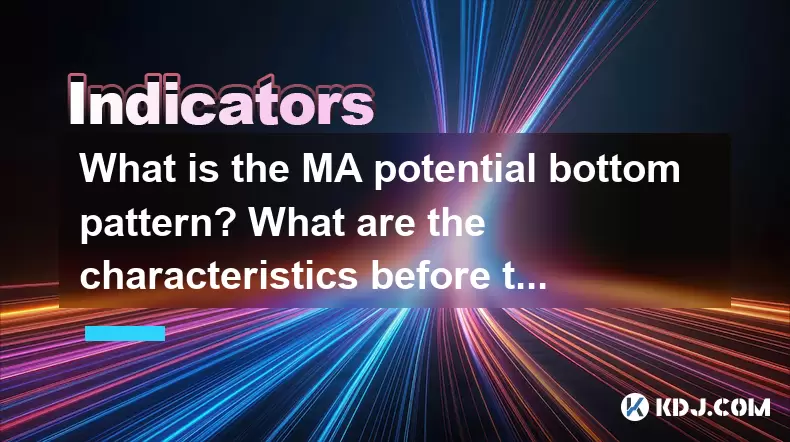
What is the MA Potential Bottom Pattern?
The MA potential bottom pattern is a technical analysis tool used in the cryptocurrency market to identify potential reversal points in a downtrend. This pattern is based on moving averages (MA), which are commonly used indicators to smooth out price action and highlight trends over a specified period. The MA potential bottom pattern suggests that a cryptocurrency might be reaching a bottom and could potentially reverse its trend upwards.
Characteristics of the MA Potential Bottom Pattern
To identify an MA potential bottom pattern, traders look for specific characteristics in the price action and moving averages. The key elements include:
- Convergence of Moving Averages: Multiple moving averages, typically the 50-day, 100-day, and 200-day MAs, start to converge at a certain price level. This convergence indicates a potential exhaustion of the downtrend.
- Price Action: The price of the cryptocurrency begins to stabilize and form a base, often with less volatility. This stabilization can be seen through the formation of higher lows or a tight trading range.
- Volume: A decrease in trading volume during the downtrend, followed by an increase as the price starts to stabilize, can signal that the selling pressure is diminishing.
How to Identify the MA Potential Bottom Pattern
Identifying the MA potential bottom pattern involves a few steps that traders can follow:
- Select Moving Averages: Choose the moving averages you want to monitor. Commonly used MAs are the 50-day, 100-day, and 200-day.
- Monitor Convergence: Watch for the selected MAs to start converging on the price chart. This convergence can be identified by the MAs coming closer together and potentially crossing each other.
- Observe Price Action: Pay attention to the price action as the MAs converge. Look for signs of a base formation, such as higher lows or a consolidation phase.
- Analyze Volume: Check the trading volume. A decrease in volume during the downtrend followed by an increase as the price stabilizes can confirm the potential bottom.
Characteristics Before the Outbreak
Before an outbreak from the MA potential bottom pattern, there are several characteristics that traders should be aware of:
- Price Consolidation: The price will often enter a consolidation phase, forming a tight trading range. This consolidation can be seen as the market digesting the previous downtrend and preparing for a potential reversal.
- Bullish Divergence: Look for bullish divergence between the price and momentum indicators like the Relative Strength Index (RSI) or the Moving Average Convergence Divergence (MACD). Bullish divergence occurs when the price makes lower lows, but the momentum indicator makes higher lows, signaling weakening downward momentum.
- Breakout Signals: Watch for breakout signals such as the price breaking above key resistance levels or moving averages. A breakout above the 50-day or 100-day MA can be a strong signal of a potential reversal.
- Increased Volume: An increase in trading volume during the breakout can confirm the validity of the reversal. Higher volume indicates that more traders are participating in the move, adding credibility to the breakout.
Practical Example of the MA Potential Bottom Pattern
Let's consider a hypothetical example of a cryptocurrency, CryptoX, to illustrate how the MA potential bottom pattern might play out:
- CryptoX has been in a downtrend for several months, with its price dropping from $100 to $50.
- The 50-day, 100-day, and 200-day MAs begin to converge around the $50 level, signaling a potential exhaustion of the downtrend.
- The price of CryptoX starts to stabilize, forming higher lows and trading within a tight range between $48 and $52.
- Trading volume decreases during the downtrend but starts to pick up as the price stabilizes, indicating diminishing selling pressure.
- A bullish divergence is observed between the price and the RSI, with the price making lower lows but the RSI making higher lows.
- Eventually, CryptoX breaks out above the 50-day MA at $53 on increased volume, signaling a potential reversal and the start of an uptrend.
Frequently Asked Questions
Q1: Can the MA potential bottom pattern be used for short-term trading?
A1: While the MA potential bottom pattern is typically used for identifying longer-term reversals, it can also be applied to shorter time frames. However, traders should use shorter-term moving averages, such as the 10-day or 20-day MAs, and be aware that shorter-term patterns may be more susceptible to false signals.
Q2: How reliable is the MA potential bottom pattern in predicting a reversal?
A2: The reliability of the MA potential bottom pattern can vary depending on market conditions and the specific cryptocurrency being analyzed. While it can be a useful tool, it should not be used in isolation. Traders should combine it with other technical indicators and fundamental analysis to increase the accuracy of their predictions.
Q3: Are there any other indicators that can complement the MA potential bottom pattern?
A3: Yes, several indicators can complement the MA potential bottom pattern. These include the RSI for identifying overbought or oversold conditions, the MACD for confirming momentum shifts, and support and resistance levels for identifying potential breakout points.
Q4: Can the MA potential bottom pattern be used for all cryptocurrencies?
A4: The MA potential bottom pattern can be applied to any cryptocurrency that has sufficient trading volume and price data to generate reliable moving averages. However, the effectiveness of the pattern may vary depending on the liquidity and volatility of the specific cryptocurrency.
Disclaimer:info@kdj.com
The information provided is not trading advice. kdj.com does not assume any responsibility for any investments made based on the information provided in this article. Cryptocurrencies are highly volatile and it is highly recommended that you invest with caution after thorough research!
If you believe that the content used on this website infringes your copyright, please contact us immediately (info@kdj.com) and we will delete it promptly.
- Bitcoin (BTC) Price Prediction: Next Target $112,000 as Double Bottom Pattern Plays Out
- 2025-05-29 04:35:20
- The launch of the first XRP futures ETF (XRPI) marks a major step forward for institutional crypto adoption.
- 2025-05-29 04:35:19
- Quant (QNT) maintains a recovery trend, with the layer 2.5 network announcement for institutions and decentralized finance (DeFi)
- 2025-05-29 04:30:13
- With the conclusion of Crypto Dinner, Trump Coin price could continue crashing exacerbating its 20% dip caused by whale sell-offs
- 2025-05-29 04:30:13
- Uniswap's UNI Price Aims Fresh Increase
- 2025-05-29 04:25:13
- Monero (XMR) Returns to Top 25 Cryptocurrencies by Market Capitalization
- 2025-05-29 04:25:13
Related knowledge
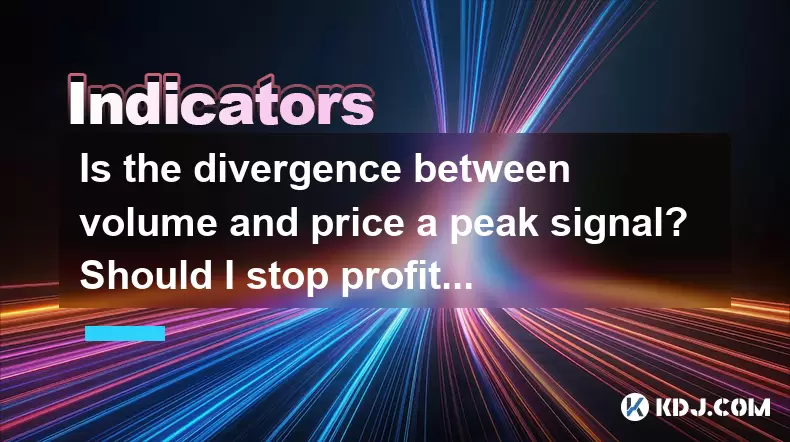
Is the divergence between volume and price a peak signal? Should I stop profit or hold?
May 29,2025 at 04:43am
Is the divergence between volume and price a peak signal? Should I stop profit or hold? In the world of cryptocurrencies, traders often look for signals that can indicate potential peaks or troughs in market trends. One such signal that traders frequently monitor is the divergence between volume and price. This phenomenon occurs when the trading volume ...
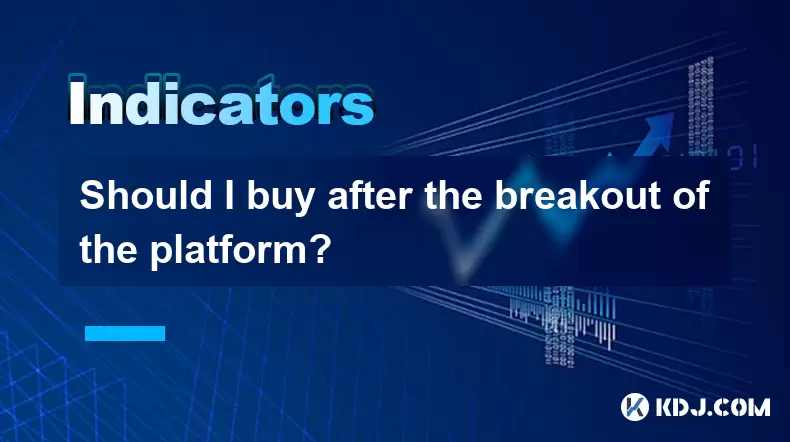
Should I buy after the breakout of the platform?
May 29,2025 at 04:35am
Understanding Breakouts in CryptocurrencyBreakouts in the cryptocurrency market occur when the price of a digital asset moves above a defined resistance level or below a support level, often leading to increased volatility and trading activity. A breakout can signal the start of a new trend, either bullish or bearish, depending on the direction of the p...
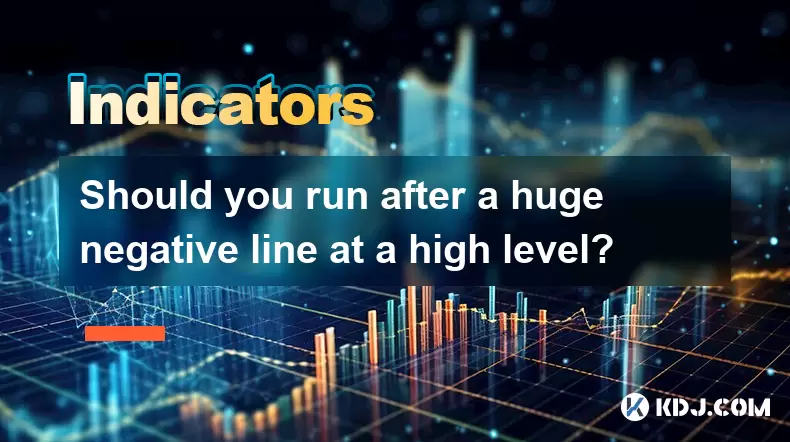
Should you run after a huge negative line at a high level?
May 29,2025 at 04:21am
Should you run after a huge negative line at a high level? When navigating the volatile world of cryptocurrencies, one of the most challenging decisions traders face is whether to chase a significant price drop after a high. A huge negative line at a high level often signals a sharp reversal in market sentiment, and understanding how to react to such mo...
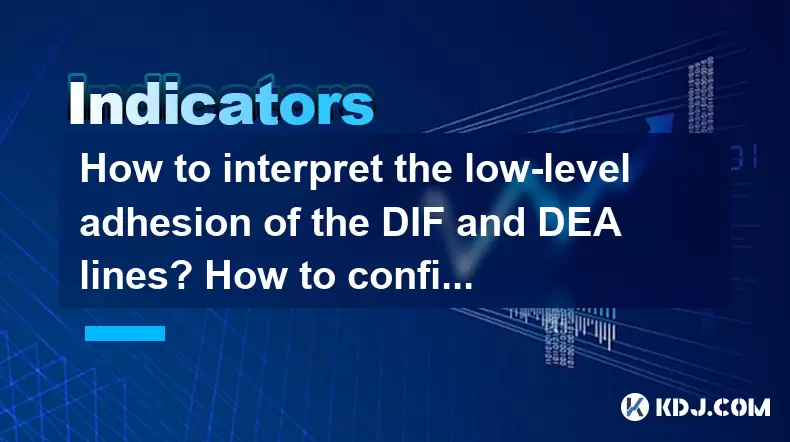
How to interpret the low-level adhesion of the DIF and DEA lines? How to confirm the direction selection signal?
May 29,2025 at 02:49am
Understanding the low-level adhesion of the DIF and DEA lines in the context of cryptocurrency trading involves delving into the specifics of the Moving Average Convergence Divergence (MACD) indicator. The MACD is a trend-following momentum indicator that shows the relationship between two moving averages of a cryptocurrency's price. The DIF line, also ...
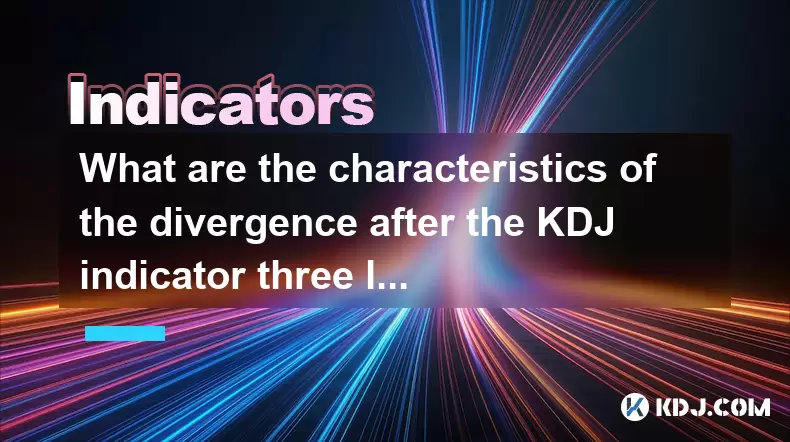
What are the characteristics of the divergence after the KDJ indicator three lines merge into one? What are the direction selection signals?
May 29,2025 at 03:14am
The KDJ indicator is a popular tool used in the cryptocurrency trading community to identify potential trend reversals and to gauge the momentum of price movements. When the three lines of the KDJ indicator—namely the K line, D line, and J line—merge into one, it often signifies a significant event in the market. This phenomenon is known as a divergence...
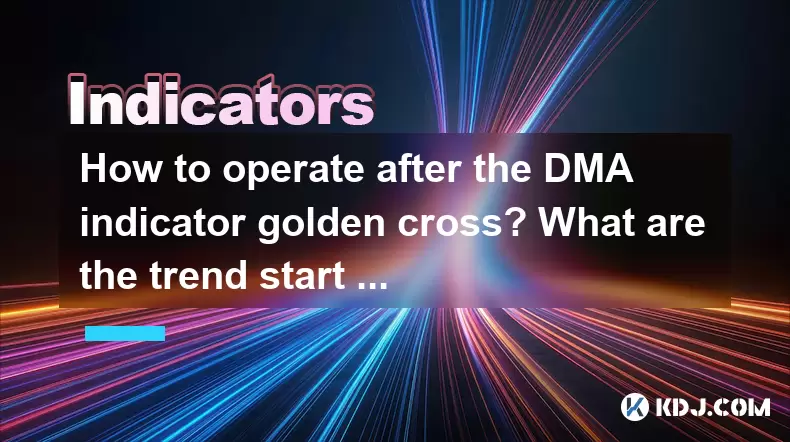
How to operate after the DMA indicator golden cross? What are the trend start signals?
May 29,2025 at 12:21am
How to Operate After the DMA Indicator Golden Cross? What Are the Trend Start Signals? The DMA (Dual Moving Average) indicator is a popular tool among cryptocurrency traders for identifying potential trend changes and entry points. A golden cross on the DMA indicator occurs when a shorter-term moving average crosses above a longer-term moving average, s...

Is the divergence between volume and price a peak signal? Should I stop profit or hold?
May 29,2025 at 04:43am
Is the divergence between volume and price a peak signal? Should I stop profit or hold? In the world of cryptocurrencies, traders often look for signals that can indicate potential peaks or troughs in market trends. One such signal that traders frequently monitor is the divergence between volume and price. This phenomenon occurs when the trading volume ...

Should I buy after the breakout of the platform?
May 29,2025 at 04:35am
Understanding Breakouts in CryptocurrencyBreakouts in the cryptocurrency market occur when the price of a digital asset moves above a defined resistance level or below a support level, often leading to increased volatility and trading activity. A breakout can signal the start of a new trend, either bullish or bearish, depending on the direction of the p...

Should you run after a huge negative line at a high level?
May 29,2025 at 04:21am
Should you run after a huge negative line at a high level? When navigating the volatile world of cryptocurrencies, one of the most challenging decisions traders face is whether to chase a significant price drop after a high. A huge negative line at a high level often signals a sharp reversal in market sentiment, and understanding how to react to such mo...

How to interpret the low-level adhesion of the DIF and DEA lines? How to confirm the direction selection signal?
May 29,2025 at 02:49am
Understanding the low-level adhesion of the DIF and DEA lines in the context of cryptocurrency trading involves delving into the specifics of the Moving Average Convergence Divergence (MACD) indicator. The MACD is a trend-following momentum indicator that shows the relationship between two moving averages of a cryptocurrency's price. The DIF line, also ...

What are the characteristics of the divergence after the KDJ indicator three lines merge into one? What are the direction selection signals?
May 29,2025 at 03:14am
The KDJ indicator is a popular tool used in the cryptocurrency trading community to identify potential trend reversals and to gauge the momentum of price movements. When the three lines of the KDJ indicator—namely the K line, D line, and J line—merge into one, it often signifies a significant event in the market. This phenomenon is known as a divergence...

How to operate after the DMA indicator golden cross? What are the trend start signals?
May 29,2025 at 12:21am
How to Operate After the DMA Indicator Golden Cross? What Are the Trend Start Signals? The DMA (Dual Moving Average) indicator is a popular tool among cryptocurrency traders for identifying potential trend changes and entry points. A golden cross on the DMA indicator occurs when a shorter-term moving average crosses above a longer-term moving average, s...
See all articles





















